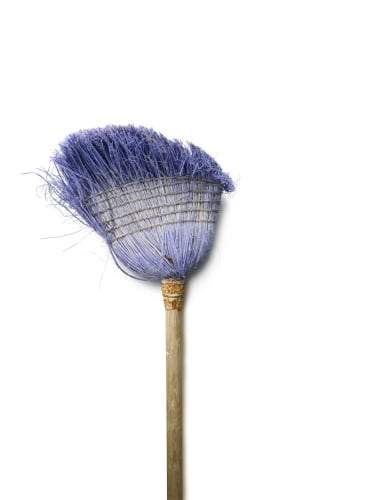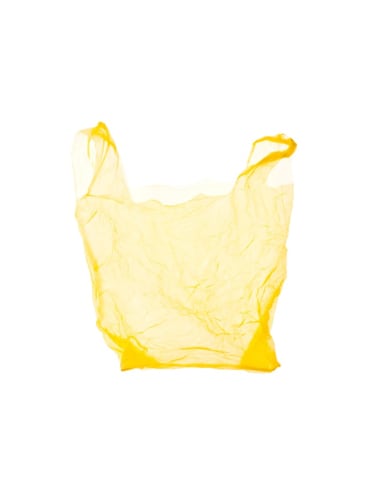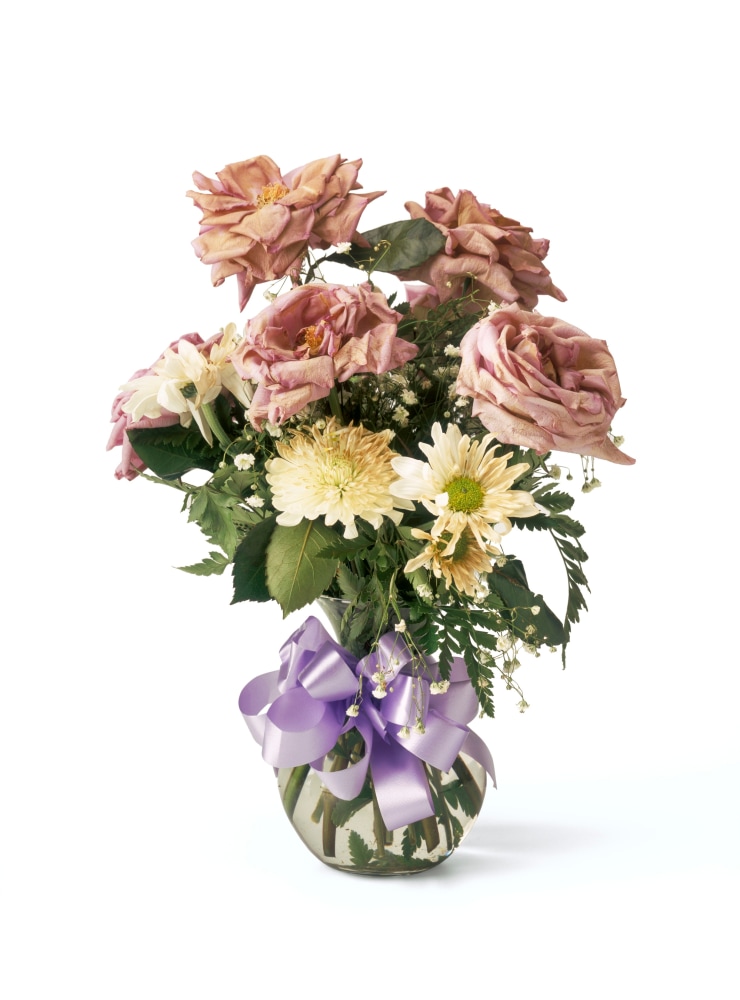Octavia Art Gallery is pleased to announce Prematurely Discarded, an exhibition featuring a selection of works by Chuck Ramirez (1962- 2010). The show is in collaboration with Ruiz-Healy Art of San Antonio, the exclusive representative of the Estate of Chuck Ramirez.
About the Exhibition
“When I am empty please dispose of me properly,” the words emblazoned across the front of a plastic cup in Chuck Ramirez’s Whatacup, evoke the preoccupation with discardment, which is persistent in the artist’s work. Chuck Ramirez often produced images of everyday objects, photographing his subjects out of context, isolated against a stark white background, thereby enticing the viewer to reexamine them. For Ramirez, photographing rubbish wasn’t just about finding beauty in the mundane; it was also about exploring the fragility and temporality of life. Mortality emerged as a key theme in Ramirez’s work, and many of the quotidian subjects were expressions of his reorientated view of life that grew out of living with both HIV and a dire heart condition. This exhibition explores the refuse that so often was the focal point of Ramirez’s photographs. By dignifying discarded objects, Ramirez illuminated subconscious concerns with ephemerality, mortality and his concern with being prematurely discarded.
About Chuck Ramirez
Ramirez showed extensively throughout the United States, Mexico and Europe. Solo and group exhibitions include: the Bronx Museum of Contemporary Art, New York; El Portal del Arte Contemporáneo (ARCO), Madrid; Centro de la Imagen and Galerie Lamm, Mexico City; Galeries Khadrberlin, Berlin; Arlington Museum of Contemporary Art; Center of Visual Arts, Denver; the Austin Museum of Art at Laguna Gloria; the Institute of Visual Arts, Milwaukee; Blue Star Contemporary Art Museum San Antonio; and the Elizabeth Dee Gallery, New York. He was selected for an Artpace residency in 2001. Ramirez works are part of important collections around the world, including: the San Antonio Museum of Art; Smithsonian American Art Museum, Washington D.C.; Museum of Fine Arts, Houston; The Art Museum of South Texas, Corpus Christi; The McNay Art Museum, San Antonio; The European Museum of Photography, Paris; the University of Texas at San Antonio; AT&T Center Art Collection; The South Texas Blood and Tissue Center, San Antonio; The Hildago Foundation of Bexar County; San Antonio Water Systems; and Linda Pace Foundation.
Candy Tray Series
The Candy Tray series was first introduced alongside Whatacup during Ramirez’s residency at Artpace in San Antonio. As Ramirez described it, he became “obsessed” with these discarded objects and continued to add to the series for a period of six years, culminating in ten large pigment print photographs. In the works, the chocolate has been consumed, and what remains is the plastic tray, depleted and ready to be discarded. The deserted plastic trays express a sense of melancholy and pose the question: When I’m empty what’s my purpose? There is still sublime beauty in the finely wrought chocolate-less trays. In Godiva 2, the bright gold rectangular box shot from a bird’s eye view becomes a regal object. It glints as the texture in the surface and curve of each chocolate compartment catch the light. It loses its distinction as a chocolate box, and in turn is reminiscent of an ornate gold-leaf coffered ceiling. While the tray has lost its utilitarian purpose, through Ramirez’s photographic lens it achieves a certain beauty and spirit. His chocolate trays illustrate the recurring theme in his artwork of the premature disposal of items that still have value or life. In Dark Heart, from 2008, the metaphorical meaning of the candy trays takes on a literal form. Ramirez photographs a Hershey’s chocolate tray against a stark white background, transforming the Valentine’s treat into something melancholic. Ramirez struggled later in his life with an enlarged aorta, a serious heart condition. He lived with the risk of a sudden rupture and instant death. The despondent, tar-colored, heart-shaped tray emits a kind of diabolic cruelty. It has a level of insidiousness in that it is beautiful but simultaneously deadly. Ramirez explained he chose the tray because he loved the blackness of the heart. When probed in an interview about its association with his ailment, he merely said that the “hearts are pretty and I like shooting them” (Ramirez 2008). Ramirez underwent heart surgery to repair his damaged aorta two years after he shot this photograph.
Careyes and Brooms Series
In the Careyes series, which includes Mexican Martini, Ramirez photographs makeshift paint containers fashioned from plastic soda bottles collected along the western coast of Mexico. These soda bottles go through a daily metamorphosis: after the contents are imbibed at lunch by the workers, they are sliced in half and used to hold paint or nails in the afternoon. “Formally they look like venetian glass,” Ramirez observed (Ramirez 2008). There is elegance in its imperfections, and Ramirez used the word “optimistic” to describe the recycled object. In the same series, Ramirez displayed photographs of used brooms he collected in Careyes, Mexico. The dilapidated brooms tell the story of their laborious life. In Orange Half Broom, Ramirez photographed the tattered, apricot-colored bristles and half worn shaft of a shabby broom. The broom’s head has become frayed, unraveled and the fibers have taken a permanent shape from their sweeping motion. The broom takes on humanistic qualities, as the bristles resemble a coif of hair and the shaft an aged neck. From its disrepair springs personality. Ramirez said the series was inspired by the optimism of the Mexican labor force. He recounted how storeowners in Mexico, especially Mexico City, sweep the sidewalks in front of their storefronts constantly. For Ramirez, the futile task of cleaning in a filthy city evidenced determination and even optimism. Ramirez described the brooms as “metaphors for the human spirit, weathered, but enduring and always optimistic and colorful” (Ramirez 2008). It’s hard not to see this as a description of Ramirez. Ethel Shipton, a close confidant of Ramirez, used similar words to describe what Ramirez’s friendship offered her: “ Place...worth... optimism (always)...belonging...strength” (Snyder 2011). Lori Dunlap, a friend of Ramirez, attested: “ I will never forget the lessons [Chuck] taught me...to love where you are and who you are with, completely...to embrace the moment as if there is no tomorrow...and to see beauty in the everyday and the commonplace” (Snyder 2011). The better tomorrow that Ramirez saw in the brooms and bottles reflected himself and his worldview. In this sense, the objects are portraits of the artist, revealing his character and spirit.
Quarantine Series
Ramirez was inspired to create the Quarantine series when his grandmother was hospitalized for a spinal injury. While visiting her at the hospital, Ramirez noticed the abandoned bouquets left in patient rooms. The floral arrangements were of the type often found for sale in the hospital lobby shops: brightly colored flowers with baby’s breath and fern fillers arranged in a cheap vase and tied with a cheery, satin ribbon bow. Ramirez noticed these bouquets had begun to lose their vibrancy: the flowers had wilted, the water was sometimes murky, and the ribbons had lost their charm. Ramirez collected the abandoned, faded bouquets from patients’ rooms and photographed seven of them for a series entitled Quarantine. The photographs, which were given descriptive names like Pink Ribbon and Green Paper, dignify the deserted objects, but also, on a deeper level, illuminate ideas around illness, ephemerality, and mortality. The series is reminiscent of 17th century Dutch still lifes known as “vanitas,” in which dying flowers were often included to symbolize the fragility of life. In Ramirez’s Pink Ribbon the fuchsia flowers and hunter-green ferns have begun their decaying process. Despite retaining its cheery color, the bouquet is starting to sag, the baby’s breath has started to shrivel, the petals are beginning to brown, and the water in the vase has started to turn. The work emits a certain melancholic feeling, and the fate of the patient who received the bouquet remains a mystery. Is he alive or, like the fading flowers, did he perish? The bouquets take on the role of a memorial to the dying and the deceased. To Ramirez, the flowers were a “metaphor for the spirit of the condition of the person in the room.” (Ramirez 2008) The story illuminates Ramirez’s unique perspective towards objects, in the Quarantine series he identified and even empathized with abandoned bouquets, breathing new life into the objects by dignifying them through his camera lens.
Euro Bags
Ramirez followed Broom Series with a collection of photographs entitled Euro Bag. Some in the collection are simply white and others have labels in French or Spanish, accumulated during a trip to Europe in 2009. The type of bags he photographed are usually found discarded and clinging to a roadside hedge. They are the epitome of rubbish, but Ramirez, by photographing against his white backdrop, has highlighted their ethereal qualities transforming them into exquisite objects. The group of plain bags in mint green, peach and different shades of blues have a gossamer delicateness that make them appear more like silk negligees. For Ramirez, photographing rubbish wasn’t just about finding beauty in the mundane; it was also about exploring the fragility and temporality of life. Ramirez was interested in “the aftermath or the refuse– the finality of things ”(Ramirez 2008). Through these pictures he explored what it meant to be discarded, but also found hope in what’s next. Euro Bags was the last series Ramirez created before his untimely and tragic death.
Ramirez, Chuck. 2008. Interview by David S. Rubin. San Antonio Museum of Art.
Snyder, Hills. 2011. "Flying Around In The Rain (for Chuck Ramirez)." Glasstire Texas.





